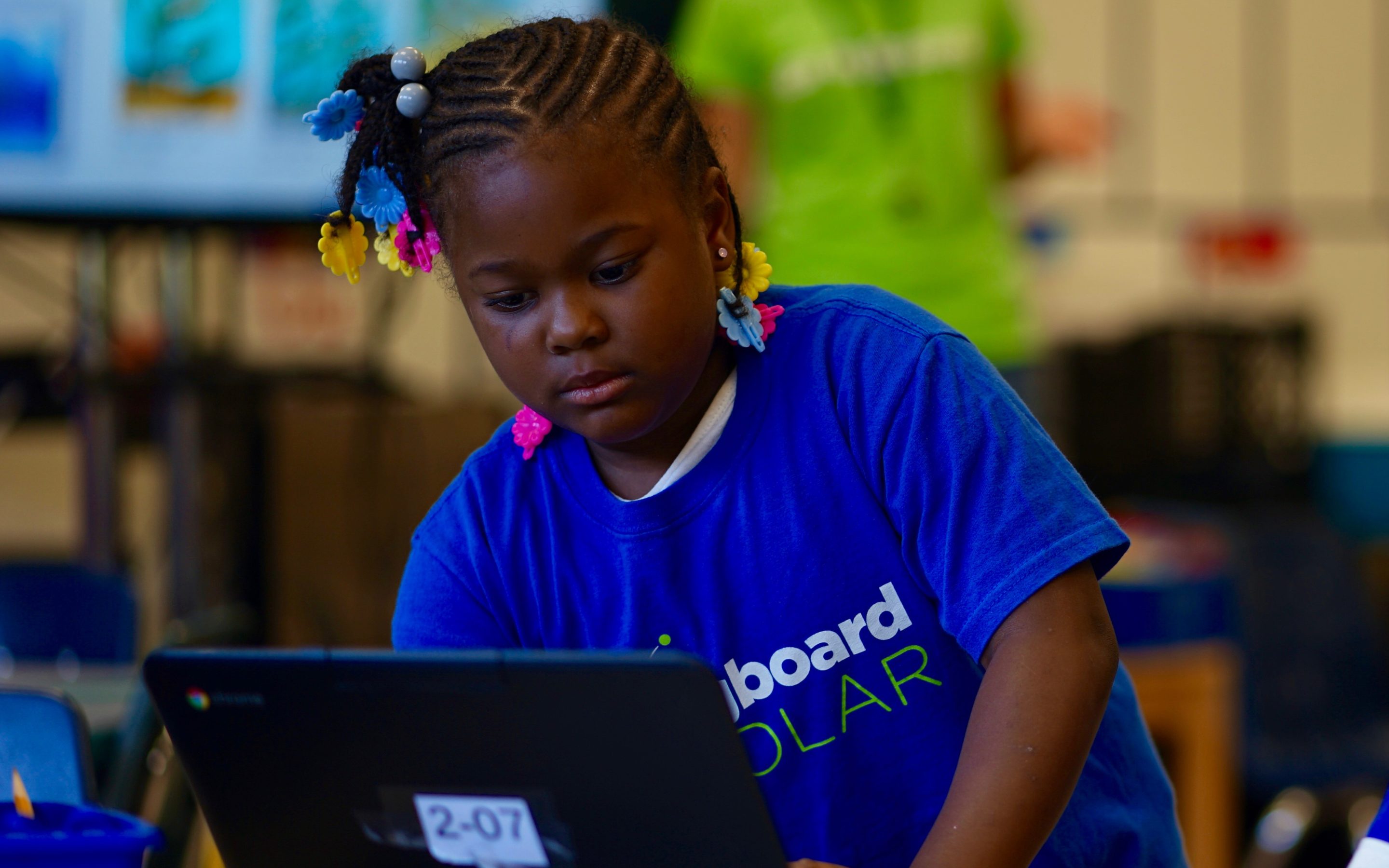In my first year of teaching, my class of 32 students had 8 rusty desktop computers. I remember feeling relieved that at least my students could rotate in four even groups to the computers. Two years later, at a school in a more affluent zip code, each of my students had their own Chromebook. This access to technology completely transformed my classroom–students could participate in online forums through Google Classroom and update their Class Dojo stories throughout the day to loop their families into their learning.
My students cultivated their digital literacy and learned how to safely and responsibly navigate the online world–an experience not afforded to my students in my first classroom.
The stark contrast in technology access between my two classrooms unfortunately reflects the disparity across schools in our country. The COVID-19 pandemic has illuminated this technology gap, calling into question the viability of distance learning for all students. According to the Pew Research Center’s 2015 data, almost one in five K-12 students do not have access to computers or the internet at home. This tech gap disproportionately impacts black and latinx youth, who often experience unreliable access to broadband internet with outdated hardware and software.
In the spring of 2020, the quick and unexpected pivot to distance learning, school districts across the country have mobilized to make technology accessible to their students and broaden access to Wi-Fi. However, access does not directly translate to nourishment of our students’ minds and wellbeing.
This climate demands educators work in partnership with families to foster a meaningful and supportive home learning environment.
The prospect of cultivating this supportive virtual learning environment seems bleak when you consider that the majority of American schools lacked a culture of online learning prior to the COVID-19 outbreak. Without a strong foundation of digital expectations, procedures, and norms, the average teacher and student in the United States are woefully unprepared to take on this new normal.
Even if educators establish these digital norms and encourage student and family buy-in, students will likely still struggle to learn as they cope with the uncertainty of this crisis without the typical support they receive while physically attending school. While we can speculate that this pandemic is impacting the wellbeing of all students, we currently do not have national data on the racial makeup of American victims of COVID-19.
Illinois is one of the only states that has released COVID-19 data disaggregated by race. According to Ibram X. Kendi, the numbers reveal “a pandemic within a pandemic”: African Americans constitute 14.6% of the state population but 28% of confirmed coronavirus cases in Illinois. COVID-19 is destined to amplify the social determinants of health for vulnerable patient populations, deepening systemic racial inequity in our country.
With this looming yet invisible threat to the most vulnerable students in our education system, educators must find ways to adopt a healing-centered approach in their practice to ensure educational equity.
In this moment, we can learn so much from scholar and former youth worker, Dr. Shawn Ginwright, who challenges educators to move beyond trauma-informed care to healing-centered engagement. Ginwright describes a healing-centered approach as shifting from what happened to you and toward what’s right with you. Healing-centered engagement empowers those who have experienced trauma to become agents in fostering their own well-being.
If teachers hadn’t previously implemented healing-centered approaches in their in-person instruction, how can we expect them to embed this practice in a remote learning context? Educators can start small by engaging families in a wellness check-in to gauge the emotional, mental, and physical health of their students and families. This check-in can help educators to cultivate deeper relationships with families while also empowering families to express any concerns they have around meeting their basic needs.
Insofar as educators tend to the essential needs of their students, students can start to feel comfortable enough to learn. Ginwright invites us to encourage our students to dream and imagine, which he describes as an antidote to harm and injury.
This time of disruption actually serves as a prime opportunity to engage young people creatively to help them see beyond the current moment.
Culturally responsive practices and digital books can support students to imagine and visualize a new reality.
In a different time and place, I was convinced that technology access was necessary and sufficient to meet the learning needs of my students. In this new normal, however, digital access does not go far enough–we must meaningfully care for the emotional wellbeing of our students by allowing them to radically reimagine the world and their place in it. Now more than ever, educators must adopt a whole child approach and partner with families to support the emotional and physical health of all students.



Lindsey, thank you for this call to action. I look forward to enhancing our existing program with Dr. Ginwright’s absolutely vital approach.
Great post! Thank you for the links to all the great articles.